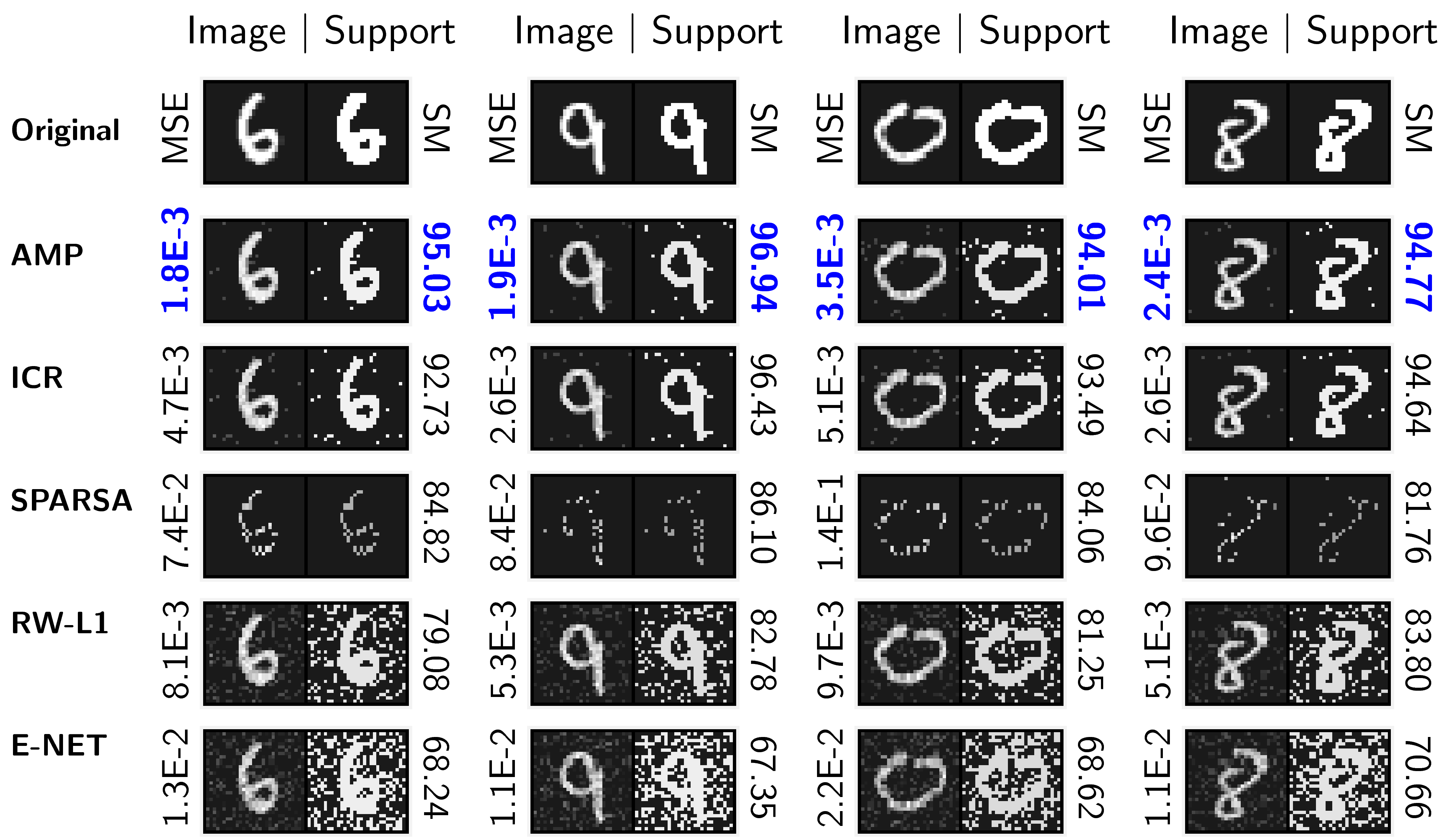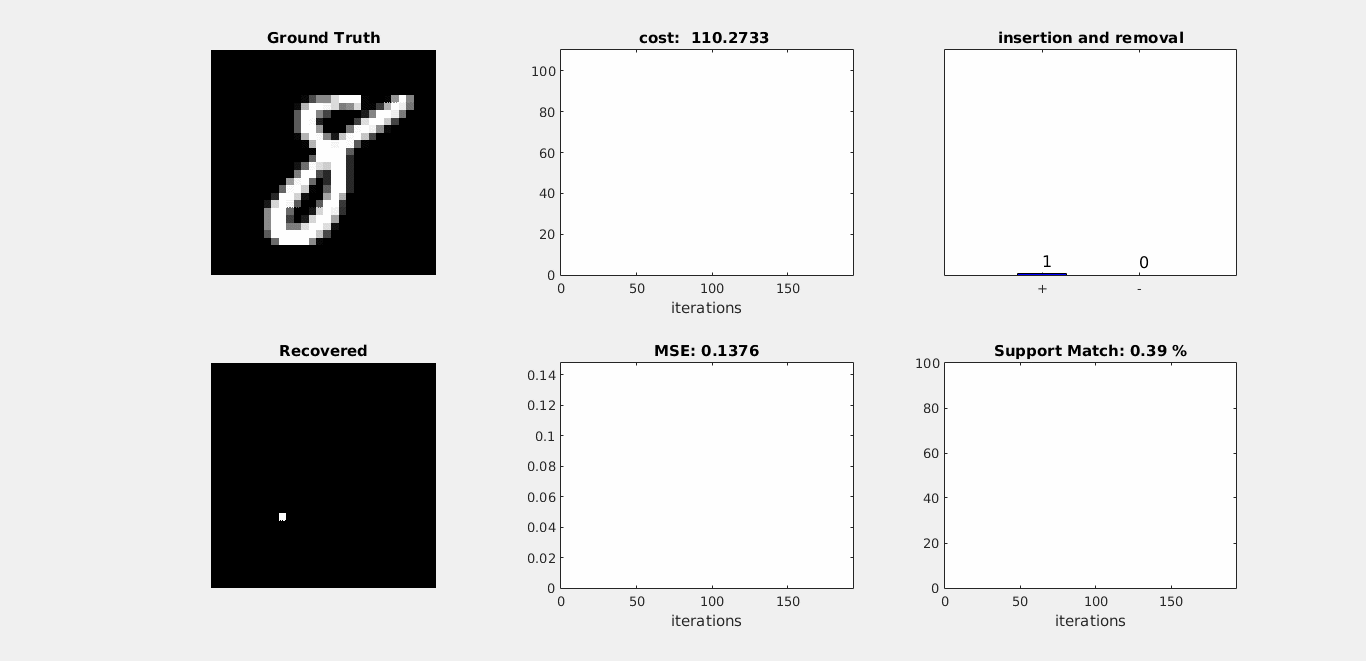AMP Toolbox
This toolbox has been uploaded online for easy access to implementation of the following paper.
Please contact me for question regarding this toolbox.
Software
The MATLAB code corresponding to our proposed algorithm can be downloaded here.
Experimental Results
We perform one experiment with sparse data that is naturally non-negative and vary the sparsity level of from 10 to 120 and compare the running time, MSE, optimal cost function and SM of different methods. Results are shown in Figure below. Similar trends can be seen in this figure where AMP requires less running time than ICR does while it consistently outperforms others in the remaining aspects. It is worth to mention that AMP and ICR obtain almost the identical cost which is better than what SpaRSA achieves.

Image Recovery
We apply the different sparse recovery algorithms to real data for image reconstruction. We work with the well-known handwritten digit images MNIST. Since most of pixels in each image are inactive (0), each image is naturally sparse. The experiment is set up such that a vectorized sparse signal is to be reconstructed from a smaller set of random measurements. We randomly generate a Gaussian matrix. For each signal, we add a Gaussian noise. Clearly, AMP and ICR outperform other methods with slightly better but much faster results provided by AMP:

Visualization of AMP


Related Publications
Tiep H. Vu, Hojjat S. Mousavi, Vishal Monga, "Adaptive matcing pursuit for sparse signal recovery." IEEE on International Conference on Acoustics, Speech, and Signal Processing (ICASSP), 2017. [pdf]. Finalist for the Best Student Paper Award.